On September 19, 2017, Mexico experienced a 7.1 magnitude earthquake near Mexico City. The earthquake damage has claimed over 350 lives to date and left thousands of people homeless. Ironically, this came on the anniversary of the 1985 Mexico City earthquake that killed thousands of people. In response, the Structural Engineers Association of Southern California (SEAOSC) has assembled a team to conduct earthquake reconnaissance in the affected areas. SEAOSC is a member-centric organization with a mission to promote advancements in structural engineering for the betterment of our members and the community at-large. The lessons learned from earthquake events are immeasurable in the endeavor to constantly develop our understanding of building performance and support Code enhancements. In seeking to gain necessary knowledge to bring these lessons back to our local membership and communities, SEAOSC’s Safer Cities Reconnaissance Team’s mission is summarized below.
-
Building Survey: The team will focus on the performance of structures within the following categories:
- Collapsed Structures: In recent years, our engineering community has been trying to assess which major deficiencies cause full or partial collapse of structures. In Taiwan, reconnaissance teams identified common deficiencies in collapsed buildings and presented findings to ATC and EERI to further explore these deficiencies. The recent Mexico City earthquake can provide further examples for these efforts.
- Well Performing Structures: Our team will observe structures that have done well during the earthquake to better understand good engineering practices and detailing.
- Buildings Targeted by Southern California Ordinances: Through past earthquakes, certain building types are known to perform poorly, resulting in a safety hazard to the general public. Cities in Southern California have passed mandatory ordinances for building types such as Non-Ductile Concrete and Pre-Northridge Steel Moment Frame. The team will collect information on the performance of these structures to better assist cities in the development and implementation of these ordinances.
- Retrofitted Buildings: Because the area had a previous major earthquake, there may be retrofitted and rehabilitated buildings affected by the earthquake with observable performance. It will be a benefit to our engineering community to observe the efficacy of implemented rehabilitation and retrofit strategies.
-
Resiliency Assessment: In recent years, the focus in structural engineering has expanded to consider the resiliency of our communities. The idea of resilient communities goes beyond damaged buildings. It focuses on preparation, response, and recovery time of the community. This earthquake will provide us with an example of how a major city prepared and reacted to a major event as well as how they plan to recover. Our team is planning to gain additional insight and gather information to help move the resiliency conversation forward through the following:
- Perform interviews with residents to understand how they prepared for the event, determine if they felt their planning was effective, as well as how they plan to re-build and plan for future emergencies.
- Visit emergency centers, hospitals, fire stations, police stations, communication centers etc. to better understand what they did to prepare for the earthquake and how their examples can help our communities improve their planning initiatives.
- Virtual Reality Survey: Earthquake reconnaissance has been occurring since the 1940’s if not earlier. However, as an engineering community we have struggled to use the data gathered to prepare our engineers to respond to an earthquake. There are many training programs for earthquake response, but they find it is difficult to convey to the public as well as to engineers what a real earthquake scenario will look like. With today’s technology, we feel that we can make great improvements in this effort. The SEAOSC team members will not only survey damaged buildings but also use 3D (or 360) cameras to survey entire neighborhoods. The images will be available for use in future earthquake response training (e.g., virtual reality goggles).
SEAOSC Mexico Reconnaissance Team Members:
Led by Daniel Zepeda, Chair of SEAOSC’s Existing Buildings Committee, the Mexico City Safer Cities Reconnaissance Team is comprised of six members of the Association. The team has a wealth of experience, and passion for structural engineering and how we positively impact our community’s built environment to not only save lives, but to recover rapidly after a natural disaster. The team will depart on October 10th. While in Mexico, they will provide daily blogs, which can be found on the Safer Cities Reconnaissance page of SEAOSC’s website (www.seaosc.org/Safer-Cities-Recon), as well providing updates on their trip through SEAOSC’s social media outlets. Be sure to follow and share their blog and social media updates with your friends and colleagues as we collectively improve our understanding and motivate action to reduce losses in future disasters!
Brief biographies of the team members are provided below.
|
Daniel Zepeda, S.E. (Team leader)
|
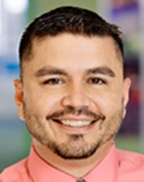 Mr. Zepeda is both the SEAOSC and SEAOC Existing Buildings Committee (EBC) chair and principal at Degenkolb Engineers. He has been highly involved in advancing the mission of SEAOSC in recent years and is also participating in the update of the latest version of ASCE 41 and the new ATC 78. Daniel was a member of Degenkolb’s post-earthquake reconnaissance team that surveyed both the 2010 Chile Earthquake, the 2010 Baja California Earthquake and the 2016 Taiwan Earthquake. Daniel was the team leader for the Taiwan Earthquake reconnaissance team. With over a decade of experience in seismic evaluation and seismic strengthening of existing buildings, Daniel’s project breadth spans large medical centers, civic buildings and privately owned structures. He is also currently helping Cities in the Los Angeles area including the Cities of Los Angeles, Santa Monica, Beverly Hills and West Hollywood with their seismic programs. His experience and Mexican heritage is expected to serve him well as the team leader. Mr. Zepeda is both the SEAOSC and SEAOC Existing Buildings Committee (EBC) chair and principal at Degenkolb Engineers. He has been highly involved in advancing the mission of SEAOSC in recent years and is also participating in the update of the latest version of ASCE 41 and the new ATC 78. Daniel was a member of Degenkolb’s post-earthquake reconnaissance team that surveyed both the 2010 Chile Earthquake, the 2010 Baja California Earthquake and the 2016 Taiwan Earthquake. Daniel was the team leader for the Taiwan Earthquake reconnaissance team. With over a decade of experience in seismic evaluation and seismic strengthening of existing buildings, Daniel’s project breadth spans large medical centers, civic buildings and privately owned structures. He is also currently helping Cities in the Los Angeles area including the Cities of Los Angeles, Santa Monica, Beverly Hills and West Hollywood with their seismic programs. His experience and Mexican heritage is expected to serve him well as the team leader.
|
|
Kenneth O’Dell, S.E.
|
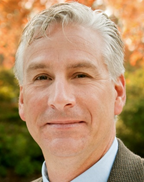 Mr. O’Dell is the SEAOSC Board Treasurer, SEAOC Communications Committee Chair, and a principal at MHP. He has over 25 years of experience and has been responsible for several significant projects including K-12 and higher education campuses, major hotels, housing, civic projects, and commercial and retail structures throughout the western United States. He supports client’s business continuity and risk management decisions through education of pertinent structural aspects for preparation, planning and response. He has previously traveled to Haiti and Nepal to do building assessments and reconnaissance following the respective 2010 and 2015 earthquakes. He also had experience early in his career during Northridge Earthquake. Ken may be tasked as a field team leader, if it is determined a second field team makes sense to cover more ground during the trip. Mr. O’Dell is the SEAOSC Board Treasurer, SEAOC Communications Committee Chair, and a principal at MHP. He has over 25 years of experience and has been responsible for several significant projects including K-12 and higher education campuses, major hotels, housing, civic projects, and commercial and retail structures throughout the western United States. He supports client’s business continuity and risk management decisions through education of pertinent structural aspects for preparation, planning and response. He has previously traveled to Haiti and Nepal to do building assessments and reconnaissance following the respective 2010 and 2015 earthquakes. He also had experience early in his career during Northridge Earthquake. Ken may be tasked as a field team leader, if it is determined a second field team makes sense to cover more ground during the trip.
|
|
Russell McLellan, P.E.
|
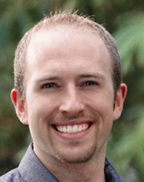 Mr. McLellan is one of SEAOSC’s most heavily involved young members. He is a member of the SEAOSC EBC and a staff engineer for Simpson Gumpertz & Heger. He played a significant role in the development of the SEAOSC SWOF and NDC guides and is currently involved in developing multiple PN-SMF papers. In addition to his SEAOSC involvement, Russell brings a breadth of experience on analysis, retrofit, and investigation of existing buildings. Russell is expected to be a valuable asset to the SEAOSC Mexico earthquake reconnaissance team, because he has the ability, passion, and energy to ensure the committee produces high quality deliverables and completes its mission. Mr. McLellan is one of SEAOSC’s most heavily involved young members. He is a member of the SEAOSC EBC and a staff engineer for Simpson Gumpertz & Heger. He played a significant role in the development of the SEAOSC SWOF and NDC guides and is currently involved in developing multiple PN-SMF papers. In addition to his SEAOSC involvement, Russell brings a breadth of experience on analysis, retrofit, and investigation of existing buildings. Russell is expected to be a valuable asset to the SEAOSC Mexico earthquake reconnaissance team, because he has the ability, passion, and energy to ensure the committee produces high quality deliverables and completes its mission.
|
|
Martin (Marty) Hudson, Ph.D, G.E.
|
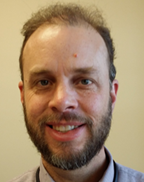 Dr. Hudson is a member of the SEAOSC Seismology Committee, and the Ground Motions Subcommittee chair. As a principal at AMEC Foster Wheeler, Dr. Hudson has extensive experience in performing geotechnical services for a wide variety of private and public developments. He has evaluated the seismic response of many sites using one-, two-, and three-dimensional finite difference and finite element computer programs, including QUAD4M, a program he co-wrote and developed during his Ph.D. studies at the University of California, Davis. He has also conducted ground motion studies of hundreds of sites in California. Dr. Hudson also has experience with site reconnaissance of the 1989 Loma Prieta Earthquake. As a geotechnical specialist, Dr. Hudson will contribute evaluation of ground motion site effects, foundation performance/influence of foundations on structural response, performance of basement walls/retaining walls, and other geotechnical effects such as site on slopes/liquefaction, etc. Dr. Hudson is a member of the SEAOSC Seismology Committee, and the Ground Motions Subcommittee chair. As a principal at AMEC Foster Wheeler, Dr. Hudson has extensive experience in performing geotechnical services for a wide variety of private and public developments. He has evaluated the seismic response of many sites using one-, two-, and three-dimensional finite difference and finite element computer programs, including QUAD4M, a program he co-wrote and developed during his Ph.D. studies at the University of California, Davis. He has also conducted ground motion studies of hundreds of sites in California. Dr. Hudson also has experience with site reconnaissance of the 1989 Loma Prieta Earthquake. As a geotechnical specialist, Dr. Hudson will contribute evaluation of ground motion site effects, foundation performance/influence of foundations on structural response, performance of basement walls/retaining walls, and other geotechnical effects such as site on slopes/liquefaction, etc.
|
|
Dion Marriott, Ph.D., P.E.
|
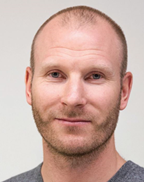 Dr. Marriott is a current member of the SEAOSC EBC, a senior engineer at Holmes Structures and is ATC-20/SAP certified. Dion contributed to the SEAOSC Non-Ductile Concrete Design Guide, and is a member of the organizing committee for the SEAOSC Summit being held this November. Dion is involved in wide range of projects, specializing in the seismic design and retrofit of buildings, including performance-based design and advanced evaluation procedures. He earned his Bachelor of Engineering (1st Class Honors) at the University of Canterbury, New Zealand in 2005. He was awarded a Doctor of Philosophy, also at the University of Canterbury, in 2009. Dion spent 4 weeks immediately following the 22nd February, 2011 Christchurch (NZ) earthquake performing rapid and detailed inspections of buildings within the Central Business District. Construction included multi-story reinforced concrete, precast concrete, URM, structural steel, and timber construction. Dion also performed rapid and detailed inspections of buildings within the Wellington (NZ) Central Business District following the 21st July 2013, and 20th January 2014, Seddon and Eketahuna earthquakes, respectively. With his experience, Dion is expected to be a key contributor to the understanding of the damaged buildings in Mexico City. Dr. Marriott is a current member of the SEAOSC EBC, a senior engineer at Holmes Structures and is ATC-20/SAP certified. Dion contributed to the SEAOSC Non-Ductile Concrete Design Guide, and is a member of the organizing committee for the SEAOSC Summit being held this November. Dion is involved in wide range of projects, specializing in the seismic design and retrofit of buildings, including performance-based design and advanced evaluation procedures. He earned his Bachelor of Engineering (1st Class Honors) at the University of Canterbury, New Zealand in 2005. He was awarded a Doctor of Philosophy, also at the University of Canterbury, in 2009. Dion spent 4 weeks immediately following the 22nd February, 2011 Christchurch (NZ) earthquake performing rapid and detailed inspections of buildings within the Central Business District. Construction included multi-story reinforced concrete, precast concrete, URM, structural steel, and timber construction. Dion also performed rapid and detailed inspections of buildings within the Wellington (NZ) Central Business District following the 21st July 2013, and 20th January 2014, Seddon and Eketahuna earthquakes, respectively. With his experience, Dion is expected to be a key contributor to the understanding of the damaged buildings in Mexico City.
|
|
Raul Jimenez, P.E.
|
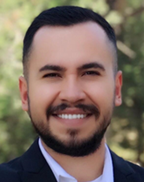 Mr. Jimenez is an engineer with 2 ½ years of experience at Brandow & Johnston, Inc. He is becoming increasingly involved with SEAOSC and looks forward to gaining and sharing lessons learned from the Mexico Reconnaissance with his peers. Raul has a large part of his extended family in the affected areas. As such, the outcome of the recent earthquakes in Mexico have particular importance to him. As a Spanish speaker, Raul will be a key member of the Reconnaissance Team by assisting in conducting interviews with residents and visiting emergency centers, hospitals, police stations etc. These interviews will be used to better understand the methods used during the event and to understand how we can prepare for a similar event here in the US. In addition, Raul has family and friends in Mexico who practice different professions; the team hopes to tap these relationships and gain additional first hand insight to assist in the mission. Mr. Jimenez is an engineer with 2 ½ years of experience at Brandow & Johnston, Inc. He is becoming increasingly involved with SEAOSC and looks forward to gaining and sharing lessons learned from the Mexico Reconnaissance with his peers. Raul has a large part of his extended family in the affected areas. As such, the outcome of the recent earthquakes in Mexico have particular importance to him. As a Spanish speaker, Raul will be a key member of the Reconnaissance Team by assisting in conducting interviews with residents and visiting emergency centers, hospitals, police stations etc. These interviews will be used to better understand the methods used during the event and to understand how we can prepare for a similar event here in the US. In addition, Raul has family and friends in Mexico who practice different professions; the team hopes to tap these relationships and gain additional first hand insight to assist in the mission.
|

